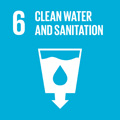- Docente: Alessandra Bendini
- Credits: 3
- SSD: AGR/15
- Language: Italian
- Teaching Mode: Traditional lectures
- Campus: Cesena
- Corso: First cycle degree programme (L) in Food Technology (cod. 8528)
-
from Feb 21, 2025 to Apr 11, 2025
Learning outcomes
Knowledge on the basic concepts for the evaluation of quality and authenticity of food products related to possible effects of raw material, process and storage technology.
Course contents
Introduction of the teacher, explanation on aims and topics, timing of lessons, modality of the final exam.
The course is splitted in different activities:
PART A (in classroom), lessons on objectives, analytical procedures and data elaboration of specific operative protocols (SOP, Standard Operating Procedure) for the quality analysis of foodstuffs.
PART B (in chemical laboratory, 5 experiences), practical training on specific analytical determinations based on the SOP explained during theoretical lessons.
Topics of the course program:
General concepts on the food quality with examples from scientific literature. The Standard Operative Procedure (SOP). Introduction to the analytical problem, basic concepts on the validation of an analytical method, titrimetric, spectrophotometric and chromatographic approaches.
Explanations on specific analytical determination of potable/mineral water. Practical training on quality parameters: determination of calcium and magnesium salts content (by titration); nitrates by enzymatic test.
Explanations on specific analytical determination of wine and fruit juice. Practical training on quality parameters: determination of the total polyphenols content by spectrophotometric assay and building of a calibration curve with gallic acid; iodimetric titration of ascorbic acid in fruit juice.
Explanations on specific analytical determination of milk and honey. Practical training on quality parameters: determination of lactose content in milk (by titration); determination of the total acidity of honey (by titration); determination of proline by spectrophotometric assay.
Explanations on specific analytical determination of tomato products. Practical training on quality parameters: extraction of licopene in tomato products and spectrophotometric determination.
Explanations on specific analytical determination of vegetable oils. Practical training on quality parameters: determination of peroxide number (by titration); transmethylation procedure for the GC analysis of fatty acid composition.
Readings/Bibliography
Electronic version (pdf) of lessons is furnished by teacher (Virtual Learning Environment platform).
For consultation/detailed study on Food Analysis topics: Cabras P., Tuberoso C., "Analisi dei Prodotti Alimentari" Ed. Piccin (Padova), 2013.
For consultation/detailed study on Analytical Chemistry topics: Harris D. C. "Chimica Analitica Quantitativa", Zanichelli, 2005.
Teaching methods
Theoretical lessons and practical experiences in chemical laboratory.
In order to improve the level of student learning on the course contents the attendance to lessons and practical experiences is recommended (but not compulsory).
The certification of health and safety training (module 1 and module 2 in e-learning mode plus module 3) is requested to students participating in praticals in labs.
Assessment methods
The knowledge and skills taught in this course (total programme with specific questions on the practical experiences in lab) will be evaluated by 1. a written test (multi-choices questions) 2. an oral examination (if the student passes the written test).
The grade for the integrated course of Chemical and Sensory Analysis of Food products will be calculated as mean value of scores reached in the the two modules of Food Chemistry (6 CFU) and Food Analysis (3 CFU).The teacher responsible for the registration of the grade is the Prof. Tullia Gallina Toschi.
Teaching tools
Lessons in presence: slide projector and electronic form of slides; practical applications in chemical laboratory.
Office hours
See the website of Alessandra Bendini
SDGs


This teaching activity contributes to the achievement of the Sustainable Development Goals of the UN 2030 Agenda.
